Kusu Island fire: How SCDF firefighters braved heavy rain, darkness to put out blaze at shrine
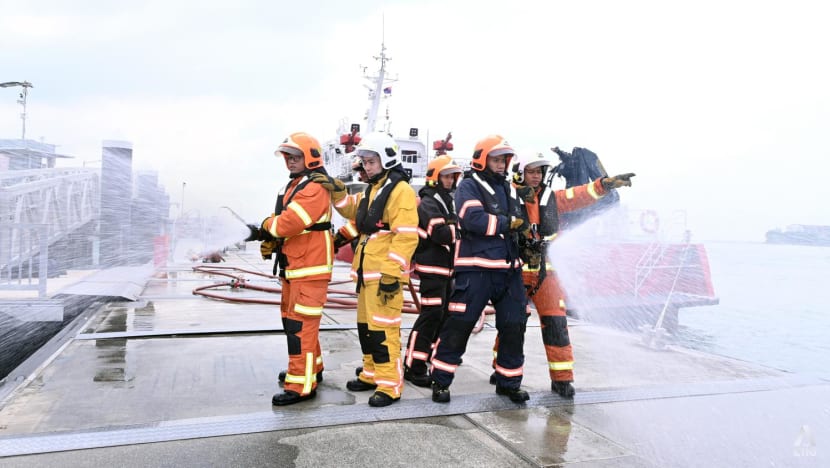
Firefighters from Brani Marine Fire Station and Marina Bay Fire Station who helped put out the recent Kusu Island fire. (Photo: CNA/Gaya Chandramohan)
SINGAPORE: When Sergeant Jagadeeshvaran Ramanathan arrived at the scene of a fire on Kusu Island, flames were tearing through the shrines or keramats on the top of a hill.
He recalled a blue plastic chair at the entrance of the shrine melting in front of his eyes. There was the creaking sound of the wood and zinc roofing breaking apart as his team laid down water hoses by the glow of the fire and the light of their torches.
It was about 7pm on Apr 17. The light was fading and rain poured down as eight firefighters who were first on the scene rolled out and connected hundreds of metres of hoses to pump seawater from the jetty to the top of the hill to douse the fire.
A full-time national serviceman at Brani Marine Fire Station, SGT1 Ramanathan has served for nearly two years and had responded to incidents at sea, but this was his first time battling a land fire.
Although he was unsure of what to expect, the team had gone on regular drills to rehearse such scenarios in the case of fires on the southern islands.

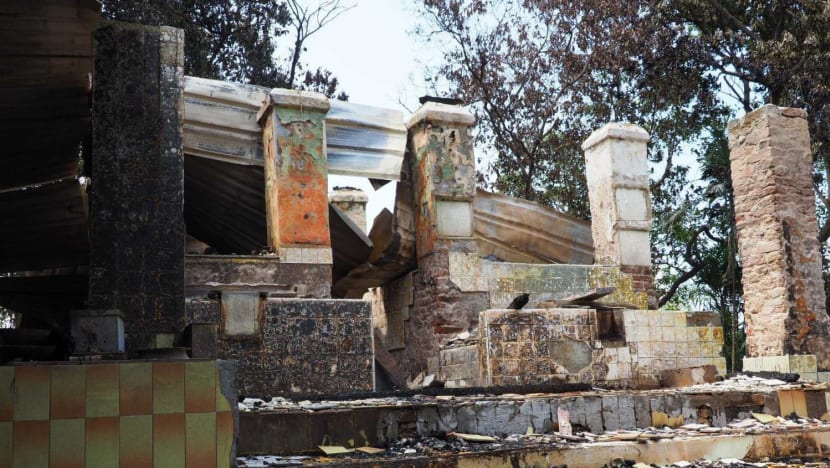
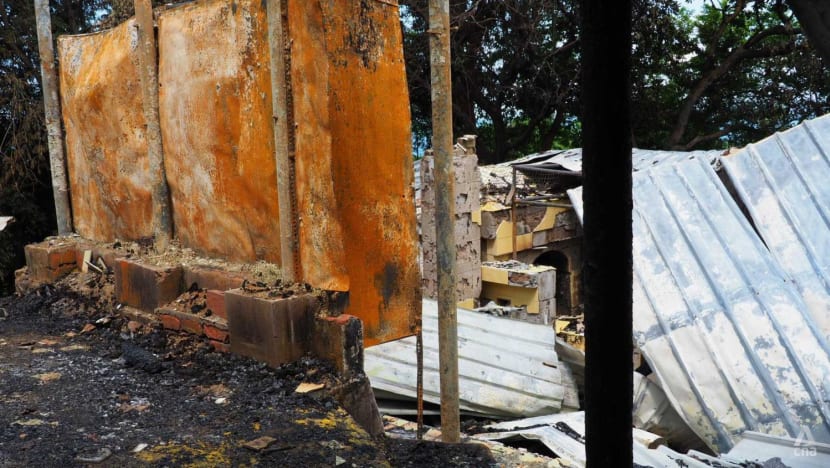

A fire like this required a combination of land and sea tactics: The Singapore Civil Defence Force's (SCDF) marine rescue vessel (MRV) was used to pump seawater to the scene, while the firefighters' experience in high-rise buildings came in useful when laying hoses up the 152 steps to the Kusu keramat.
The challenge was dealing with the weather - the rain had made the steps slippery and muddy, and there was no street lighting on the island.
While the downpour helped douse the fire, it also made operations harder in other ways. Their rain-soaked personal protective gear became much heavier and the fire turned the rainwater into steam that rose from the wet ground - a potential hazard.
Lightning also put a pause to operations once most of the fire had been extinguished, and before damping down operations began to prevent reignitions.
"It was raining really heavily, lightning was striking all over, we could see flashes of light and visibility was really bad. It was really, really slippery," said SGT1 Ramanathan in an interview on Wednesday (Apr 27).
He was among seven SCDF firefighters from two fire stations who spoke to reporters about their experience.
The others include Sergeant Abu Zar Al-Ghifari Othman, as well as veterans Lieutenant Mohammad Naizal Md Raisal, Lieutenant Glen Chua and Warrant Officer Zainul Arifin Isman.
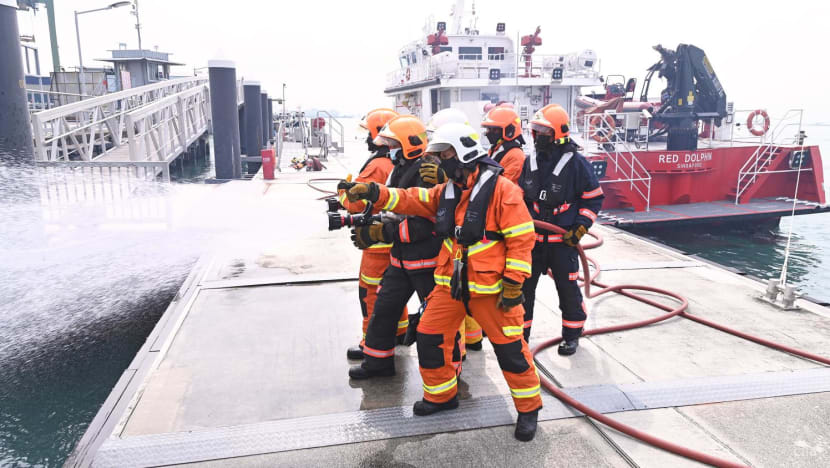
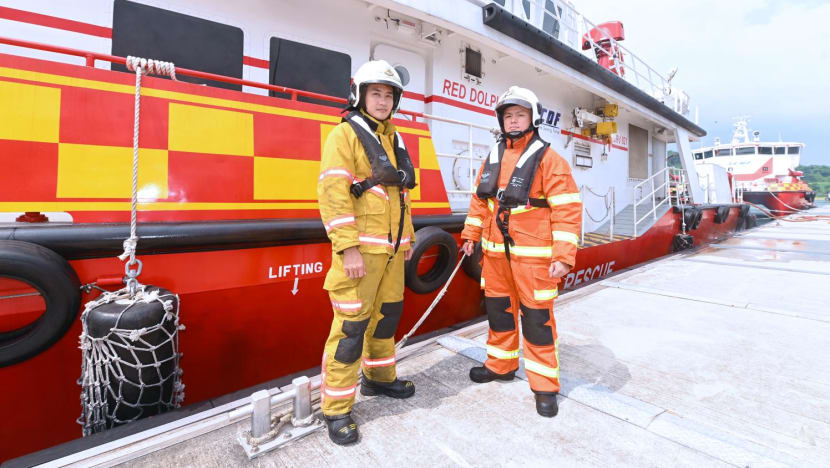
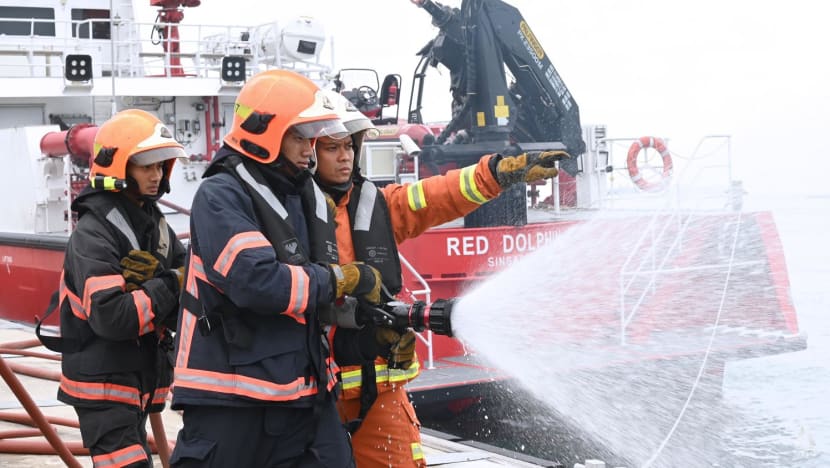
Reporters also spoke to their commanders Major Landon Leong from Brani Marine Fire Station and Commander of Marina Bay Fire Station Major Muhammad Shafi Rafie, who were directing the operations on Kusu Island.
Although big fires on Singapore's offshore islands are rare, Maj Leong said that SCDF officers visit the southern islands monthly to do operational surveys, look at potential hazards, fire safety measures and do drills.
"We will enact certain scenarios happening on the island," he said, adding that they have planned out how to lay long hoses on Kusu Island before.
In this case, a total of 18 large hoses, each 20m in length, were laid end to end to reach the foot of the hill, then 16 smaller hoses were linked in two lines up the steps, leading to two nozzles to reach the fire at the shrine. Each hose required at least two officers to manoeuvre due to the weight.
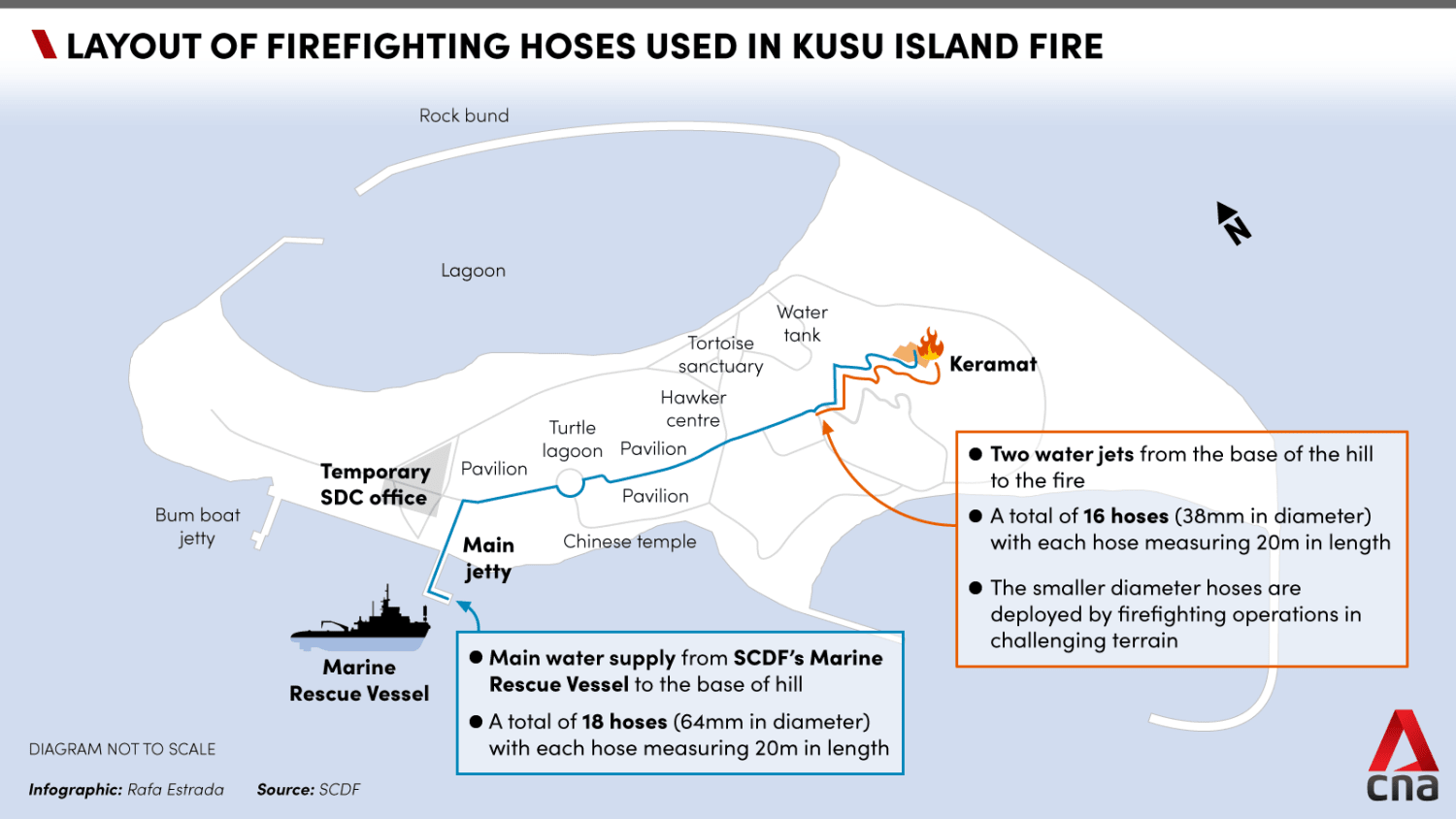
Even before the SCDF officers reached Kusu Island, the choppy seas and poor visibility were a challenge as they sailed there.
LTA Naizal, who captained the MRV that first reached the island, said there were strong currents and winds.
"It was getting dark ... to enter Kusu through the jetty, it's actually a narrow channel and there was restricted visibility ... When we were reaching, we could see the fire at the top (of the hill)," he added.
A second team of officers from Marina Bay Fire Station, who arrived later at the scene, came aboard a rapid response fire vessel dispatched from West Coast Marine Fire Station.
Lieutenant Chua was at the gym at his station when he saw thick smoke rise from Kusu Island. He messaged WO1 Arifin, who immediately told his team to start preparing for a possible operation.
WO1 Arifin, who was fasting, also told his team to prepare water. He grabbed some energy bars and soft drinks so they could break their fast on the way to the island.
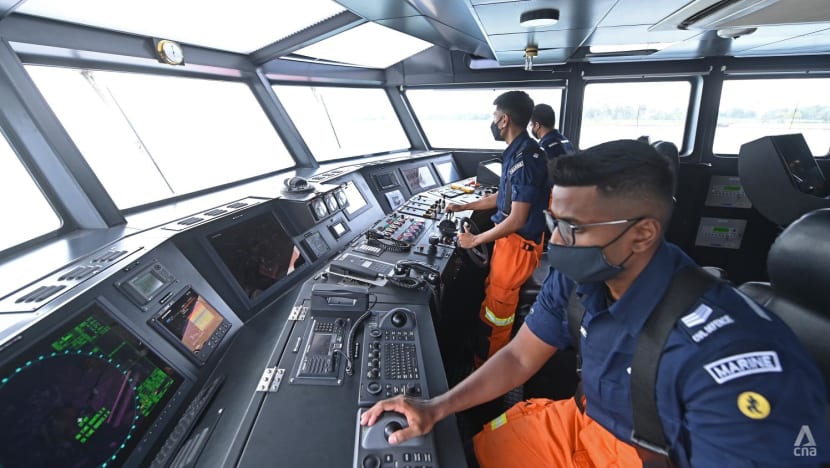

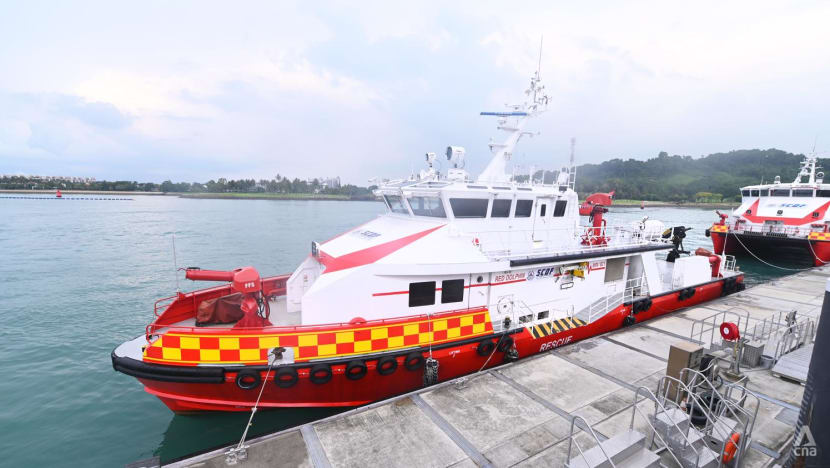
When LTA Chua and his team got there, they laid out the second hose from the foot of the hill to the shrine. Much of the fire had been put out, but they had to make sure pockets of flames in the shrine were smothered.
All this happened while Maj Leong and Maj Shafi were coordinating the firefighting operations while liaising with the shrine's caretakers and other government agencies.
Maj Shafi said that Mr Hari Hanan, a cleaner on Kusu Island who had reported the fire, helped SCDF by transporting hoses using his buggy.
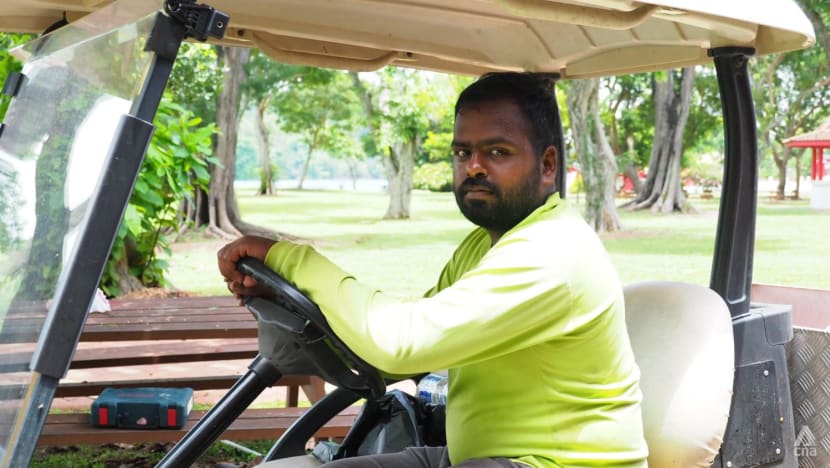
With much of the fire put out, Maj Leong paused the operation due to lightning risk before the team returned to the site to make sure that any remaining embers were snuffed out.
The main team of firefighters, with 27 people in all, left the island only at 11.30pm, after which teams of SCDF officers were put on fire watch to monitor the site. The water hoses were left in place until the next morning in case they were needed again.
The next day, fire investigators assessed the site. While the cause of the fire has yet to be determined, the preliminary investigation does not indicate that the fire was deliberately set, SCDF said in a statement.
The Kusu keramat, also called a Datuk Kong, is said to be about 100 years old and was built for a family of Malay saints.
It attracts many pilgrims each year during the ninth month of the Chinese lunar calendar.















